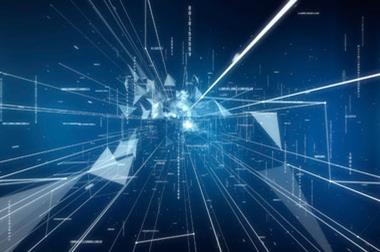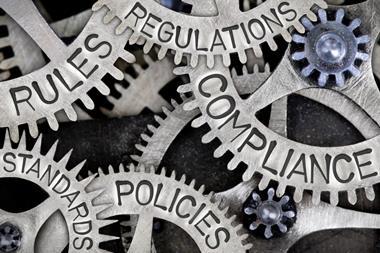The risk of a product recall is certainly nothing new, but with the relentless rise of technology, the risk landscape has changed out of all recognition

Product recalls have always loomed large as a risk that can be deeply damaging, even terminal, to some corporations. Perhaps most famously in recent times was Volkswagen’s worldwide repair of 11 million diesel vehicles so that their emissions systems would comply with pollution regulations.
The cost of this recall? Somewhere in the region of $34bn, according to reports.
The damaging effects of such drastic actions are not just short-term and financial either, nor does the product recall need to be for particularly petrifying reasons (like last year’s recall of children’s crayons from China for containing asbestos).
Take the mineral water giant, Perrier. In the early 1990s, Perrier was the leading water brand in a growing market.
Then, in 1992, it was discovered that some bottles had miniscule quantities of benzene, with no impact on human health. Perrier recalled 160 million bottles from 120 countries at a cost of more than $250m.
Despite not a single illness from the scare, by 1995, sales of Perrier water had fallen to half of their 1989 peak.
A lot has changed since then.
The Perrier recall was before the widespread use of the internet and well before the advent of social media, while the delivery of products and information has been changed forever by the maturity of new technologies.
Clawing back costs
So, what are some of the new, and sometimes hidden, issues in the supply chain that have been caused by the rise in electronics and other technological advances?
“There is an increasing trend for producers of products to look to suppliers to recoup recall costs,” says Angela Kelly, head casualty Asia-Pacific, Swiss Re Corporate Solutions.
“Advances in technology allow producers of products to more accurately identify where raw materials come from and this helps them to recoup costs from companies down the supply chain.”
Kelly says raw material producers tended to hold the view that they were protected from recall costs recouping because it is too difficult for them to be identified accurately. Not any more, however.
“In the context of technology in the automotive industry, there is an increasing trend towards platform standardisation, and sharing this can result in higher recall costs – because if there is an issue with one platform, it can impact a higher number of vehicles across numerous brands,” notes Kelly.
She says the key issues for food and beverage and auto companies – today and moving forward – include the impact of globalisation, increased traceability for recalls, reputation issues (particularly around social media), cost management, crisis management and regulatory developments.
Peter Jackson, director, Asia region, multi-national clients, Lockton Insurance Brokers, adds that some of the new recall risks are around “dependencies”, such as suppliers being dependent on IT systems, third-party IT cloud suppliers and third-party logistics systems.
“Risk has been delegated, but it is not necessarily understood either what those risks are, or who is responsible for managing them,” he says.
Jackson says businesses could be using new technologies, such as 3D printing, drones and driverless vehicles, and are facing new risks from those technologies that are not yet fully apparent.
“Then there are new payment methods, such as Apple Pay, AliPay, WeChat Pay, TrueMoney, Bitcoin, which are helping consumers, but they are still largely untried and untested, particularly from the perspective of cyber risks.”
Risk manager challenges
“It is not uncommon for risk managers to have a view that since they are at the very beginning of the supply chain, a recall claim will not happen to them,” Kelly says.
“There is also a general lack of awareness on how claims happen and evolve and a divergence of opinions on the impact of the changing landscape when it comes to recall exposures.”
Jackson says that the attitude of risk managers depends on whether or not they have experienced a major recall event. If not, there is a danger of complacency.
“This is consistent with other risks. Companies tend to be less concerned about risks they haven’t experienced, which doesn’t make sense when you think about it,” he explains.
Kelly says risk managers should mitigate the new risks around the supply chain and product recall by identifying current and future risks, evaluating against risk appetite and transferring the risk. She adds: “Mitigation can happen through improving manufacturing processes and standards, contractual agreements, financial instruments such as self-funding or risk-transfer mechanisms to protect against earnings volatility, plus having a comprehensive up to-date and regularly tested recall plan.”
Gordon Song, head, group risk and internal audit, Lazada Group, says the firm recently invested some time in coming up with a product recall plan.
“One challenge today is changes in distribution business models, especially with ecommerce.
“The question of who is liable for the product is fuzzier and the laws for ecommerce and consumer protection are not geared for this,” he says.
Rigorous oversight
Another challenge for product recalls in Asia over the next 10 years is the increased focus by authorities.
RQA Group managing director Vince Shiers says food safety authorities in this part of the world are following their US and European counterparts in increasing regulatory oversight.
“For example, 2015 saw the new Food Safety Law from the People’s Republic of China, which emphasises food safety requirements and includes requirements for online retailers,” he says.
Notification of recalls to the public is also now commonplace in some Asian countries. For example, the Singapore Agri-Food and Veterinary Authority (AVA) has an excellent real-time listing of food product recalls.
As Shiers concludes: “There is no doubt that this regulatory focus and transparency will develop further in the coming years and it will result in more recall alerts nationally and internationally.”
The Internet of Things’ impact
With the proliferation of the Internet of Things (IoT) – the network connectivity of physical devices, vehicles, buildings – product recall risks take on other forms.
“Take vehicles, for example,” Swiss Re’s Angela Kelly says of IoT. “It is now possible for vehicle manufacturers to remotely fix a problem within a vehicle operating system without the need to replace parts or inconvenience consumers with having to physically return the vehicle.
“However, IoT may also lead to a shift of losses from product liability to recall. Due to early detection of issues, there is a lesser chance for BI/PD to occur and companies will increasingly initiate a recall where they may not have before, or will do so earlier.”
Lockton’s Peter Jackson says IoT potentially disperses production and service across multiple organisations and geographies: “This brings complexity to how you assess ultimate responsibility for a product failure, who is responsible singly or shared, and where are they domiciled? At the very least, it makes subrogation more difficult.”




















No comments yet